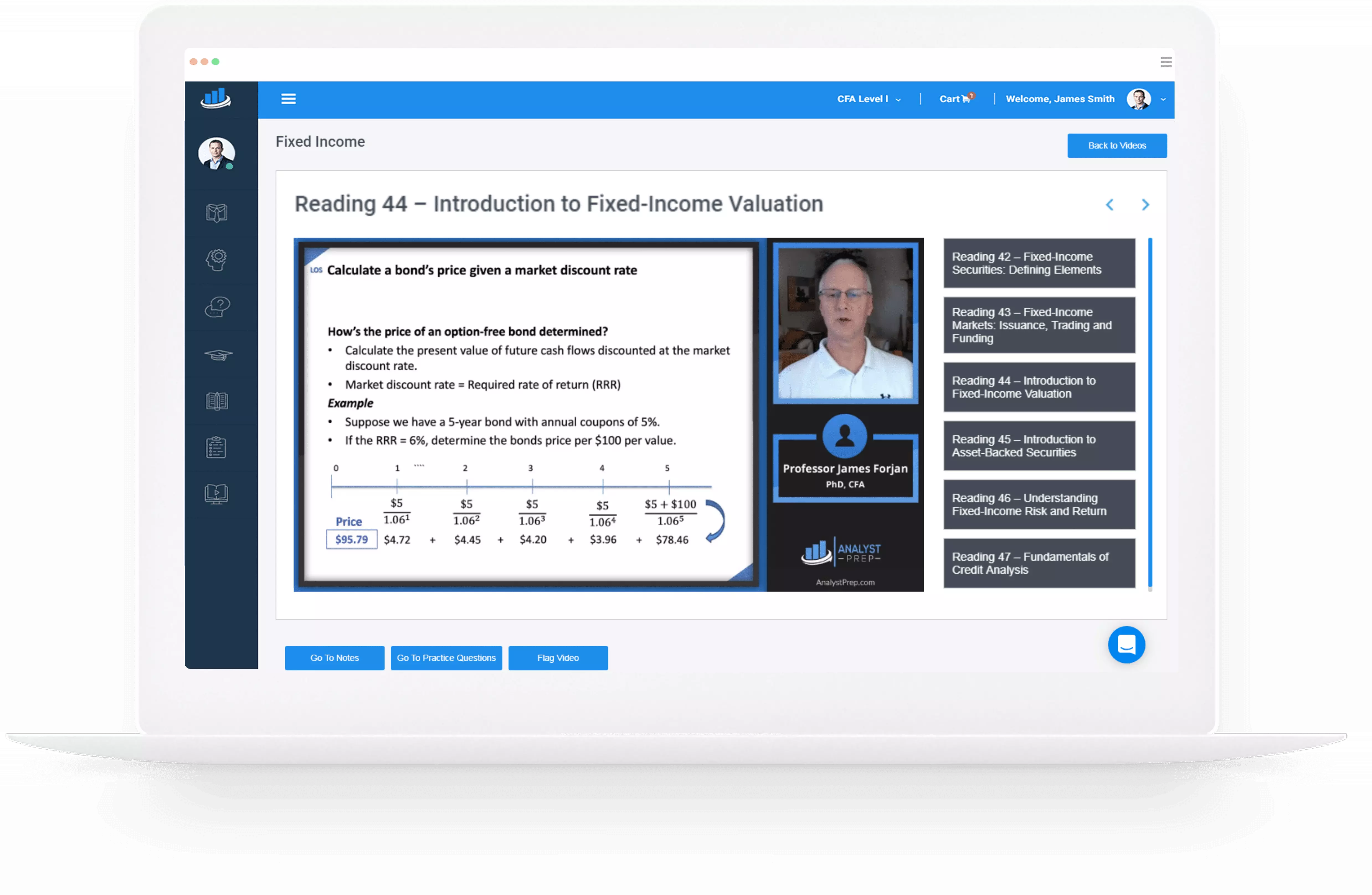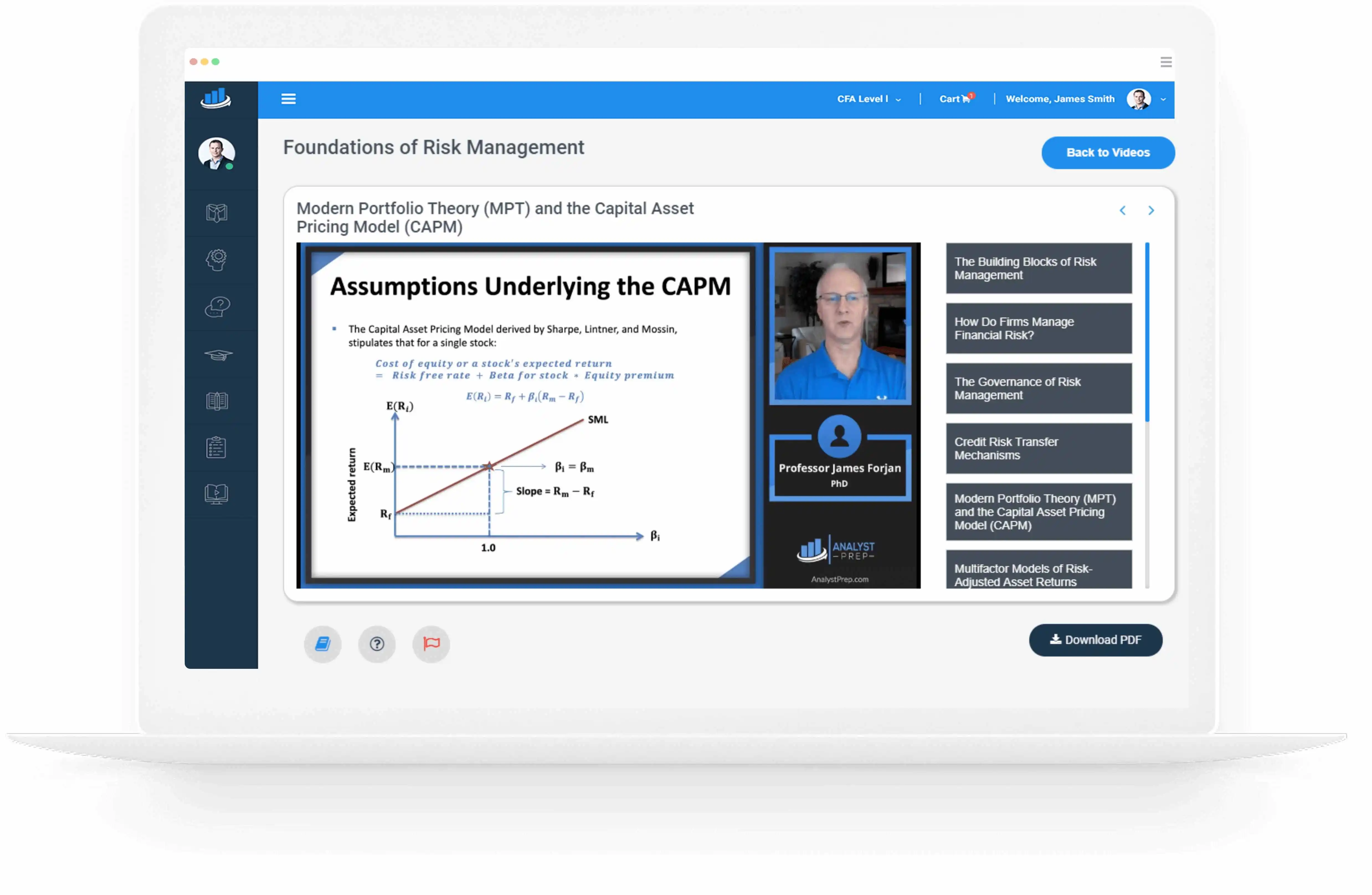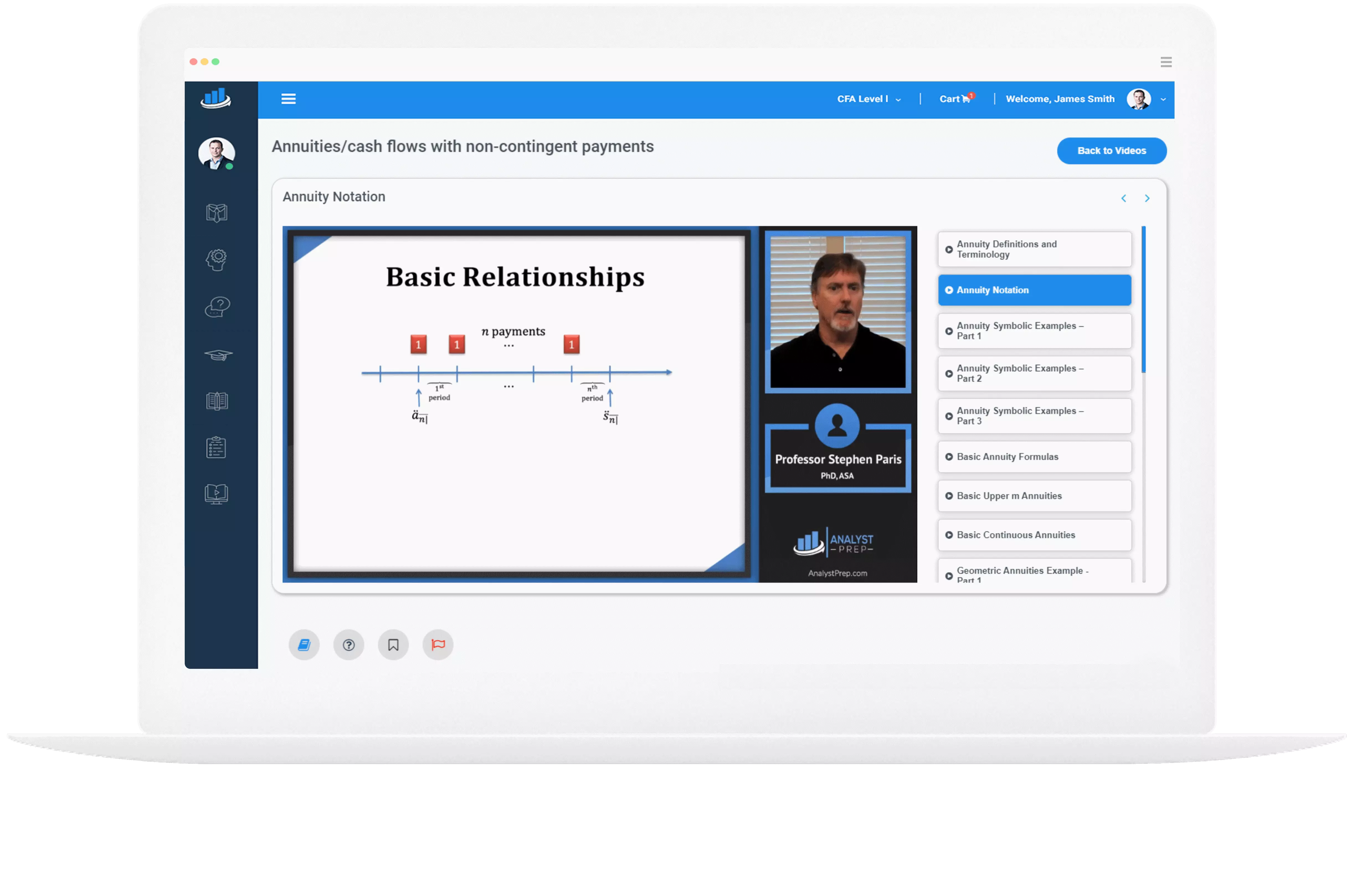The Mean Reversion
[vsw id=”-SilFtkpBK8″ source=”youtube” width=”611″ height=”344″ autoplay=”no”] Mean reversion refers to the behavior of a time series to fall when its values are above the mean and rise when they are below the mean. This is illustrated as follows: A mean-reverting…
Residual Autocorrelation
[vsw id=”-SilFtkpBK8″ source=”youtube” width=”611″ height=”344″ autoplay=”no”] The autocorrelation of a time series refers to the correlation of that time series with its past values. The kth order autocorrelation is the autocorrelation between one time series observation and the value k…
Autoregressive Models and Multiperiod Forecasts
[vsw id=”-SilFtkpBK8″ source=”youtube” width=”611″ height=”344″ autoplay=”no”] The current-time values of a time series are related to the previous time values. This property is termed autoregressive. Autoregressive models are abbreviated (\(AR_{p}\)) models. \(p\) is known as the order of the model….
Covariance Stationary Property
[vsw id=”-SilFtkpBK8″ source=”youtube” width=”611″ height=”344″ autoplay=”no”] A time series is said to be covariance stationary if its properties, such as the mean and variance, remain constant over time. A time series that is nonstationary leads to invalid linear regression estimates…
Linear or Log-Linear Model
A linear trend model should model a time series that increases over time by a constant amount. On the other hand, a time series that grows at a constant rate should be modeled by a log-linear model. To decide between…
Predicted Trend Value of a Time Series
[vsw id=”-SilFtkpBK8″ source=”youtube” width=”611″ height=”344″ autoplay=”no”] A time series shows data on a variable’s outcome in different periods—for example, a time series showing EURUSD exchange rates between a given time interval. Time series models explain the past and predict the…
Evaluating the Fit of a Machine Learning Algorithm
[vsw id=”ifHmwpgHWYY” source=”youtube” width=”611″ height=”344″ autoplay=”no”] Model Training Suppose that the target variable (y) for the ML training model has the sentiment class labels (positive and negative). To ease the calculation of the performance metrics, we relabel them as 1…
Feature Extraction, Selection, and Engineering of Textual Data
[vsw id=”ifHmwpgHWYY” source=”youtube” width=”611″ height=”344″ autoplay=”no”] Feature Extraction Feature extraction entails mapping the textual data to real-valued vectors. After the text has been normalized, the next step is to create a bag-of-words (BOW). It is a representation of analyzing text….
Preparing, Wrangling, and Exploring Textual Data for Financial Forecasting
[vsw id=”ifHmwpgHWYY” source=”youtube” width=”611″ height=”344″ autoplay=”no”] Sentiment analysis refers to the analysis of opinions or emotions from text data. In other words, it refers to how positive, negative, or neutral a particular phrase or statement is regarding a “target.” Such…
Model Training
[vsw id=”ifHmwpgHWYY” source=”youtube” width=”611″ height=”344″ autoplay=”no”] Machine learning (ML) model training entails three tasks: method selection, performance evaluation, and tuning. While there are no standard rules for training an ML model, having a fundamental understanding of domain-specific training data and…




